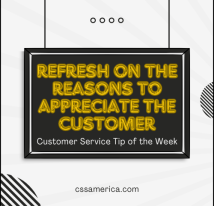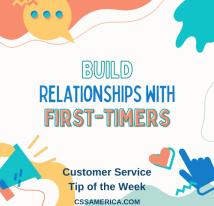
The employee tried to defuse the customer who was upset by stating “I feel the same way you do right now.”
The customer service representative told the customer “I know exactly what you’re going through.”
The client was obviously unhappy, and the employee responded “I’m as frustrated as you are.”
Maybe these responses from the employee seem appropriate – or maybe they seem out of bounds. But if you’re teetering on your decision about whether these are good or bad employee statements, read the following – the same scenarios with more context.
The employee tried to defuse the long-term customer who was upset about the no-return policy by stating “I feel the same way you do right now.”
The customer service representative told the customer who had been on hold for over an hour “I know exactly what you’re going through.”
The client couldn’t get the answer to their question on the website or on the phone and was obviously unhappy having to go downtown to the company offices, and the employee responded “I’m as frustrated as you are.”
How do the employee responses seem to you now? The problem with these statements is that they are far more focused on sympathy than empathy. They are more about stating how the employee knows the exact customer situations and maybe even has the same feelings as the customer. But often, when employees try to move from sympathy to empathy, they run a big risk.
Do they know the whole customer story? Do they truly feel what the customer feels? Does a customer want an employee to sound like the real victim of poor customer service? No. No. No.
Be careful when trying to convey to the customer that you truly know the full extent of their situation and to feel their feelings. In most cases, you don’t, and that’s okay.
Instead of serving up sympathy, show empathy. You don’t have to “feel their feelings” to provide great customer service.
Signup for FREE Tips! Contact Us More Resources for You Visit Our Home Page























